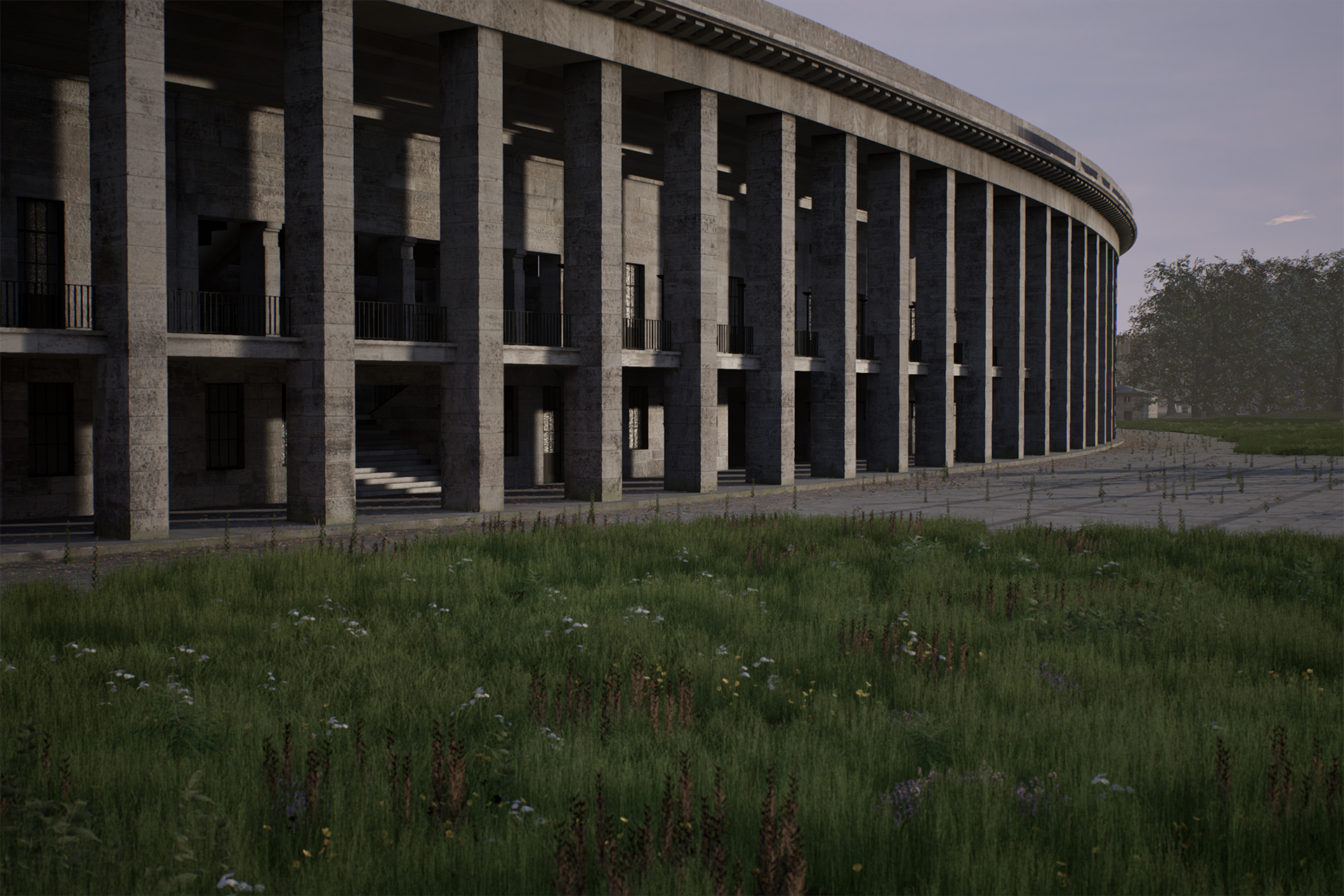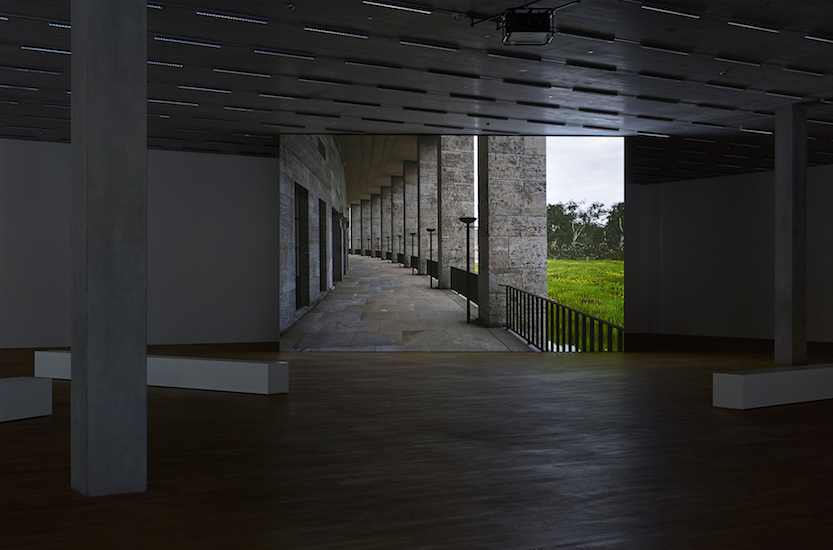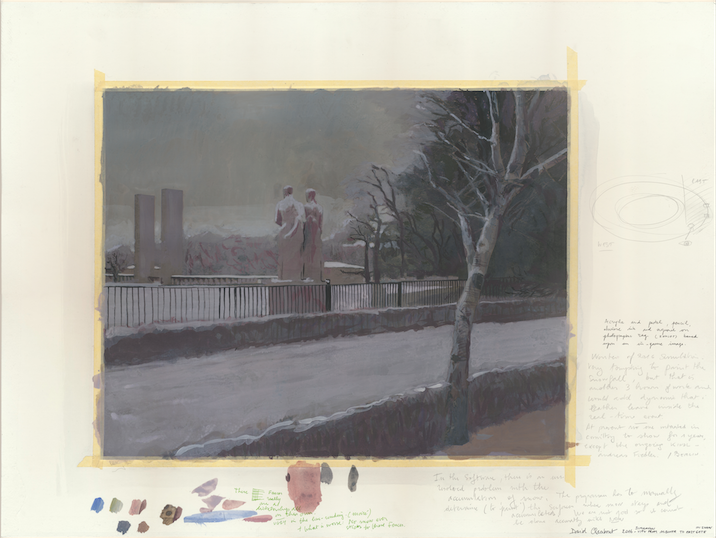
Olympia (The real time disintegration into ruins of the Berlin Olympic stadium over the course of a thousand years)
start 2016, two channel real-time projection, color, silent, HD animation, 1000 years (with support from VAF Vlaams Audiovisueel Fonds)
Olympia is a computer-generated replica of the Olympic Stadium in Berlin, which finds itself in a time-space devoid of human intervention and entrusted to the cycles of nature. Following the original 'ruinenwert' theory, which pre-incorporated the stadium’s own decay, Olympia evokes a cycle from creation to dissolution by the slow force of nature.
Olympia is an attempt to measure biological duration against imaginary duration, where 'biological duration' signifies the human lifespan, and 'imaginary duration' represents ideological time—the illusion of witnessing a millennium. While the waiting inherent to Olympia may be a stretch for exhibition visitors, living with the piece offers a meditative experience, observing time pass in an unreal environment and experiencing personal duration in relation to a much larger temporal scale. The software used is based on a so-called game-engine, using the same tools as many first-person shooting games but demonstrating a conceptual complexity that far exceeds them. Lacking the possibility of human intervention or live action, only elements of weather and growing vegetation have an impact on the building, in which each stone is in its exact original place thanks to the unique photographic scanning technique that was used. For Claerbout, the stones represent the soldiers in an army, and had to be reproduced as precisely as national socialism wanted them to be perceived.
Despite the absence of human presence, Olympia reintroduces the human element through its synchronization with our life cycle. Over seasons and years, the growth of weeds, guided by the computer program's calculations, gradually overtakes the stadium, prioritizing the 'backdrop' (nature) over the 'foreground' (human)—a recurring theme of anti-anthropocentrism in Claerbout's work. Since its premiere, building and vegetation changes have changed considerably and are documented through an archive system capturing thousands of stills since the program went live on March 15, 2016.
further reading























David Claerbout ©2025